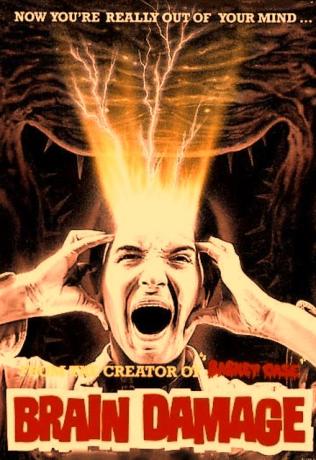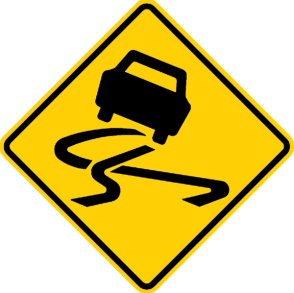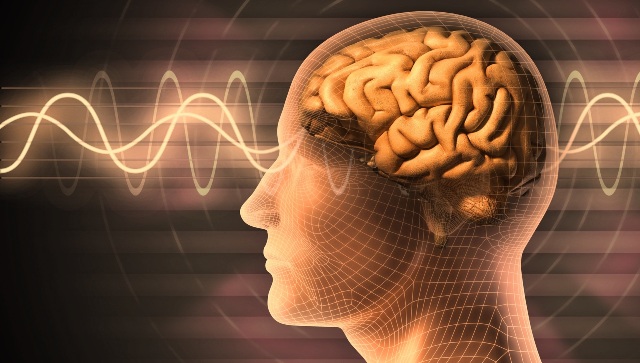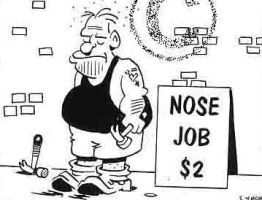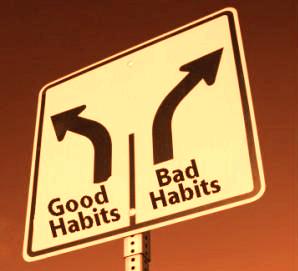Although great progress has been made in the war on racism it is an evil which persists to haunt us. From the London Olympic Games to the run-up for the American presidential election to workplaces all across the globe friction and conflict based on racial differences is still very much part of life in the Global Village. In this article I take a look at what neuroscience reveals about some of the processes in our brains related to aspects of *racist behaviour.
By Manie Bosman
You’re not a racist and I’m not a racist and we agree that all people are equal and that there is strength in diversity – so why is racial friction still a factor in the 21st Century? What continues to drive people in civilized societies to judge, degrade, discriminate against and even victimize others solely because of perceived racial differences?

Greek triple jumper Voula Papachristou has been expelled from the 2012 London Olympics by Greece, after she allegedly made offensive Twitter comments about African immigrants and expressed her support for a far-right party.
Besides the pain and sorrow it causes and the obvious moral and ethical arguments against it, racism – and all other forms of prejudice and discrimination – has the potential to be a major stumbling block in the inter-connected, globalized 21st Century marketplace. Diversity is now the norm and collaboration the name of the game. Leaders set to succeed in this complex heterogeneous environment therefore cannot afford to ignore the potential harm of racial conflict. So while fighting racism on moral and ethical grounds has brought us a long way, perhaps the insights gained from neuroscience can help us take the fight to the next level.
Ideological Racism and Conditioned Racism
To start with, it is helpful to distinguish between two basic types of racism. The first, ideological racism (aka explicit or overt racism), is based on the conscious belief that race or ethnicity (see description of differences here) is the most important determinant of human traits and abilities. ‘Adherents’ typically claim that race-related traits and abilities render one race or group superior or inferior to another. This usually translates into claims that their own race is superior and that other races – identified as such on the basis of factors such as skin tone, eye colour, language, culture, customs and origin – are of lesser value. Over the years ideological racism has been offered as an excuse for discrimination, intolerance, hate speech, oppressive laws and policies and also racial violence and killings. In organized form ideological racism is typically expressed in right-wing or supremacist groups such as the Ku Klux Klan, Aryan Nations, neo-Nazi groups, the Nation of Islam and others.
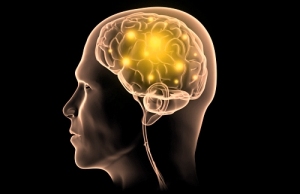 The second type of racism – which I would term conditioned racism (aka implicit, subconscious or covert racism) – is often less visible but sometimes more harmful when it rears its head in the workplace or other social environments. It is also more widespread – several studies have shown that although most people would deny having any racial biases and even be outspoken against ideological racism, almost all of us are to some extent or another influenced by conditioned racism. Unlike ideological racism, racist behaviour driven by conditioned racism is not necessarily based on conscious beliefs or ideologies about supposed racial differences. While factors such as skin tone or culture or accent can act as ‘triggers’ for conditioned racism, it is largely our brains’ automated response to anything and anyone perceived as a possible threat or enemy.
The second type of racism – which I would term conditioned racism (aka implicit, subconscious or covert racism) – is often less visible but sometimes more harmful when it rears its head in the workplace or other social environments. It is also more widespread – several studies have shown that although most people would deny having any racial biases and even be outspoken against ideological racism, almost all of us are to some extent or another influenced by conditioned racism. Unlike ideological racism, racist behaviour driven by conditioned racism is not necessarily based on conscious beliefs or ideologies about supposed racial differences. While factors such as skin tone or culture or accent can act as ‘triggers’ for conditioned racism, it is largely our brains’ automated response to anything and anyone perceived as a possible threat or enemy.
Loyalty to My Ingroup
In 1906 American sociologist William Graham Sumner introduced the world to the concept of “ethnocentrism” and the idea of social “ingroups” and “outgroups”. He suggested that our ingroups are groups of which we’re a member or with which we identify strongly. Ethnocentrism – today often termed as racism – is the view that our own ethnic group (or “ingroup”) is “the center of everything, and all other (groups) are scaled and rated with reference to it”.1 In Sumner’s view a strong “positive” attitude to our ingroup automatically causes us to form strong negative attitudes (e.g. contempt, hostility and hatred) toward any outgroup:2
“The relation of comradeship and peace in the we-group and that of hostility and war towards others-groups are correlative to each other. The exigencies of war with outsiders are what make peace inside… Loyalty to the group, sacrifice for it, hatred and contempt for outsiders, brotherhood within, warlikeness without—all grow together, common products of the same situation.”
 While the aggressive behaviour of some sport fans toward supporters of other teams prove that there is at least some credibility to Sumner’s views on ingroup loyalty and outgroup hatred, numerous studies have shown that people would sometimes discriminate against an perceived outgroup or member of an outgroup even if they have no particular loyalty to an ingroup. Also, we can in fact be loyal and dedicated to an ingroup without feeling aggression or hatred to an outgroup. So although Sumner’s concept of ingroups and outgroups provide us with a solid starting point to explain the group-relationship factor of conditioned racism, we clearly need to dig deeper to understand its underlying dynamics.
While the aggressive behaviour of some sport fans toward supporters of other teams prove that there is at least some credibility to Sumner’s views on ingroup loyalty and outgroup hatred, numerous studies have shown that people would sometimes discriminate against an perceived outgroup or member of an outgroup even if they have no particular loyalty to an ingroup. Also, we can in fact be loyal and dedicated to an ingroup without feeling aggression or hatred to an outgroup. So although Sumner’s concept of ingroups and outgroups provide us with a solid starting point to explain the group-relationship factor of conditioned racism, we clearly need to dig deeper to understand its underlying dynamics.
Perceived Un-Relatedness
David Rock, co-founder of the NeuroLeadership Institute, used results from neuroscientific research to devise the SCARF-model, according to which the human brain has five distinctive social needs (status, certainty, autonomy, relatedness and fairness). Studies have shown that when our brains perceive a ‘threat’ to any of these five social needs, the amygdala (a small almond-shaped structure, which plays an important role in emotional learning and memory) sends impulses to the hypothalamus, which then activates the sympathetic nervous system, which in turn triggers the nervous system to go into an automated ‘fight-or-flight’ mode. Simply put, perceived threats in the social environment – when your status, need for certainty, autonomy, relatedness or sense of fairness is compromised – activate the same automated ‘disengage’ (fight or flight/ avoid/ withdraw/ danger) neural circuitry in your brain as when you face a physical threat such as a fearsome predator or armed robber.3
In the context of interaction between different races the brain’s need for relatedness (our need to feel safe with ‘our own’ people – our ‘ingroup’ – and to feel that we are included in that group) is of particular importance. As part of the process to assess our relatedness in any given situation, our brains are constantly gauging whether people – strangers in particular – are ‘friends’ or ‘foes’. Anyone perceived to be different from those my brain (the amygdala) perceives as ‘friends’ or belonging to my ‘ingroup’, automatically triggers a threat response.
The results of two studies, published as early as 2000, confirmed that perceived racial differences could be enough to trigger such a response. Using functional magnetic resonance imaging (fMRI) the researchers established that our amygdala becomes more activated (indicating early stages of threat-response) when we see someone from another race than when we see someone from our own race group.4
 So, you’re relaxing on a park bench late on a Sunday afternoon when you notice that it’s going to be dark soon and that most of the other visitors have already left. Just when you decide to leave you see a tall shabby-looking stranger from ‘the other ‘ race group coming your way. His hoodie is pulled low over his forehead and his hands are in his pockets. Your heart rate picks up, you start to breathe faster and you automatically tighten the grip on your bag while nervously keeping an eye on the approaching figure. He passes by without incident and you give a sigh of relief, although for a while your ears are still pricked to pick up any changes in the rhythm of his footsteps.
So, you’re relaxing on a park bench late on a Sunday afternoon when you notice that it’s going to be dark soon and that most of the other visitors have already left. Just when you decide to leave you see a tall shabby-looking stranger from ‘the other ‘ race group coming your way. His hoodie is pulled low over his forehead and his hands are in his pockets. Your heart rate picks up, you start to breathe faster and you automatically tighten the grip on your bag while nervously keeping an eye on the approaching figure. He passes by without incident and you give a sigh of relief, although for a while your ears are still pricked to pick up any changes in the rhythm of his footsteps.
What just happened? Your brain noticed the fact that this was a stranger, that in appearance he was different from the people you usually hang out with and that there was no-one else around. Your amygdala triggered an automated ‘threat’-response, which a few moments later turned out to have been totally unjustified. However, for your brain keeping you alive is far more important than being politically correct. It would rather trigger an unwarranted threat response to a harmless stranger than to be caught asleep by a real enemy.
So was this racist behaviour? Decide for yourself, but bear in mind that while in this example the threat-response was triggered by possible race-related differences, the exact same response could have been triggered by a stranger of your own race who looked like those your amygdala has labeled as ‘enemies’ (more about that in a minute).
I REALLY Don’t Feel Your Pain
Anyone who has ever been on the receiving end of racism or any other form of discrimination understands the pain, humiliation and anger that it causes. Because of this, there is no excuse for racist behaviour. However, if we want to get to the bottom of conditioned racism it is helpful to understand just how strong the impact of the conditioning is on the ‘transgressor’s’ neural functions.
 Several studies using brain imaging techniques have shown that physical and social pain activates some of the same areas in our brains, sharing some of the same neural mechanisms and pathways. In particular, the dorsal anterior cingulate cortex (dACC) and the anterior insula are activated when we experience physical or emotional pain. Even stranger, perhaps, is that these exact same areas of the brain become activated when we watch someone else in physical or emotional pain and this then enables us to feel empathy for them. However, it seems that perceived group relatedness – and race in particular – can play a role in determining how much empathy we feel when seeing someone in pain.
Several studies using brain imaging techniques have shown that physical and social pain activates some of the same areas in our brains, sharing some of the same neural mechanisms and pathways. In particular, the dorsal anterior cingulate cortex (dACC) and the anterior insula are activated when we experience physical or emotional pain. Even stranger, perhaps, is that these exact same areas of the brain become activated when we watch someone else in physical or emotional pain and this then enables us to feel empathy for them. However, it seems that perceived group relatedness – and race in particular – can play a role in determining how much empathy we feel when seeing someone in pain.
Researchers from Peking University in China used fMRI to observe activity in the brains of Caucasian and Chinese subjects while they watched video clips of individual faces either being pricked with a needle or being touched with an ear bud. They found that the brains of both the Caucasian and Chinese subjects triggered a much stronger empathy-reaction when watching someone of their own race group suffer pain than when seeing someone from a different race group being pricked in the face. A follow-up study showed that our brains trigger a stronger empathy-response for those whom we regard as friends than for strangers – to the extent that different areas of the brain are activated depending whether we’re seeing a friend or stranger suffer pain.5
In a similar study involving soccer fans neuroscientists from the University of Zurich got similar results, but this participant’s ingroup wasn’t defined by race. The subjects – all Caucasians – watched videos where either other supporters of their favourite soccer team or supporters of a rival team received what seemed to be painful shocks to their hands. They could then decide if they wanted to help the ‘victim’ by receiving some of the pain themselves. The researchers found that when witnessing members of their own group suffer, the fans’ anterior insula became activated – showing concern and empathy – and they then offered to help even if it was going to be at their own expense. However, when witnessing supporters of the rival team suffer, the subjects’ brains showed no or little signs of automated empathy.6
 Without offering an excuse for racism or any other form of discrimination, these results show just how strong the impact of conditioned racism can be on neural processes of which we might not even be aware and over which we have little or no direct cognitive control. The results of the studies at Peking University indicate that we are more likely to regard complete strangers of our own racial group as ‘friends’ and emphasize with them than we would strangers of another racial group, simply because of the way our brains are wired. But the results of the studies at the University of Zurich make it clear that this is not primarily about race – it is really still all about perceived relatedness. But there’s more.
Without offering an excuse for racism or any other form of discrimination, these results show just how strong the impact of conditioned racism can be on neural processes of which we might not even be aware and over which we have little or no direct cognitive control. The results of the studies at Peking University indicate that we are more likely to regard complete strangers of our own racial group as ‘friends’ and emphasize with them than we would strangers of another racial group, simply because of the way our brains are wired. But the results of the studies at the University of Zurich make it clear that this is not primarily about race – it is really still all about perceived relatedness. But there’s more.
It’s Not Just About You Being Different
Matt Lieberman and a team of researchers from the University of California Los Angeles (UCLA) used fMRI to monitor brain activity in groups of African-American and Caucasian-American subjects in response to race. As part of this study the subjects were shown pictures of African-American and Caucasian-American individuals. As could be expected, there was greater amygdala activity in the brains of Caucasian-American subjects when they looked at pictures of African-Americans than when they looked at pictures of Caucasian-Americans. Surprisingly though, Lieberman and his team found that the brains of their African-American subjects also responded with significant amygdala activity when looking at pictures of people from their own group. So why do the brains of both groups flag African-Americans as a possible ‘threat’?
Lieberman explains:7
“The present study suggests that the amygdala activity typically associated with race-related processing may be a reflection of culturally learned negative associations regarding African-American individuals”.
 If participants of both racial groups responded stronger to faces of the ‘other’ group than to their own, it could have been argued that it was simply a reaction to the novelty or strangeness of seeing a face unlike those with which they interact with on a daily basis. Some might even have pushed the point and suggested that we are genetically hardwired to mistrust other races. However, this study strongly suggests that the strong amygdala response when looking at African-American faces is at least to some extent a conditioned reaction – a learnt response. The fact that participants of both race groups perceived African-American faces as possible threats probably reflect their shared negative stereotype of African-Americans.
If participants of both racial groups responded stronger to faces of the ‘other’ group than to their own, it could have been argued that it was simply a reaction to the novelty or strangeness of seeing a face unlike those with which they interact with on a daily basis. Some might even have pushed the point and suggested that we are genetically hardwired to mistrust other races. However, this study strongly suggests that the strong amygdala response when looking at African-American faces is at least to some extent a conditioned reaction – a learnt response. The fact that participants of both race groups perceived African-American faces as possible threats probably reflect their shared negative stereotype of African-Americans.
While there is something profoundly sad in discovering that negative racial stereotyping (which often manifests as racism) can even occur between members of the same race, it also offers a glimmer of hope. If this is learnt or conditioned behaviour, surely it can be unlearnt?
The Fear Factor
 It is often said that no child is born a racist, but research indicates that they catch up pretty soon. Some studies have shown that even children as young as three years of age prefer their own racial group and would discriminate against children of a different racial group. Another study found that around the age of five children become aware of racial stereotyping and that negative stereotyping about their own race can impair their academic performance. So why is the human brain so susceptible to negative labeling of racial groups other than our own?
It is often said that no child is born a racist, but research indicates that they catch up pretty soon. Some studies have shown that even children as young as three years of age prefer their own racial group and would discriminate against children of a different racial group. Another study found that around the age of five children become aware of racial stereotyping and that negative stereotyping about their own race can impair their academic performance. So why is the human brain so susceptible to negative labeling of racial groups other than our own?
A growing volume of research results are pointing towards fear as the major underlying driving force for conditioned racism.16 Some researchers have suggested that humans are born with a genetic ‘preparedness’ to learn to fear individuals from different social groups (as defined by race). Neuroscientists Elizabeth Phelps and Andreas Ollson from New York University have done extensive research on the neuroscience of racism, and they propose that “millennia of natural selection and a lifetime of social learning may predispose humans to fear those who seem different from them”.17 While the role of genetics has not been clarified, social learning, and learning to fear those from ‘other’ social groups in particular, seems key to conditioned racism.
In 2010 Andreia Santos and a group of researchers from the Central Institute of Mental Health at the University of Heidelberg in Germany launched a study involving children with the genetic condition known as Williams Syndrome. Among other symptoms, this rare genetic condition causes sufferers to be abnormally friendly even to complete strangers simply because they lack the sense of fear that the rest of us feel in some social circumstances. The children were shown a series of pictures of people from different races and asked to assign positive or negative features to the individuals in the picture. Where other children typically assign strong stereotypical features based on race (positive for ‘own’ and negative for ‘other’ races) when shown these pictures, the children with Williams Syndrome showed no racial bias whatsoever.9 Lacking the social fear from which most of us suffer to some degree, these kids were for all practical reasons ‘blind’ to race.
 The key role that fear plays in conditioned racism was more recently confirmed in research at Oxford University in the UK involving 36 Caucasian students. Half the participants were given a dose of propranolol – a drug used for the treatment of hypertension, anxiety and panic – and the rest were given a placebo which looked just like propranolol. The students then took the Implicit Attitude Test which measures implicit and often hidden negative attitudes towards social outgroups such as another race. The results showed that the students who had taken the propranolol scored considerably lower for conditioned or subconscious racism. The explanation for this somewhat strange outcome: propranol is a beta blocker which inhibits the action of adrenaline and other stress hormones on the sympathetic nervous system which, as we know by now, mediates the fight-or-flight response. By inhibiting the students’ autonomous fear reaction, the drug significantly reduced their conditioned racial bias!10
The key role that fear plays in conditioned racism was more recently confirmed in research at Oxford University in the UK involving 36 Caucasian students. Half the participants were given a dose of propranolol – a drug used for the treatment of hypertension, anxiety and panic – and the rest were given a placebo which looked just like propranolol. The students then took the Implicit Attitude Test which measures implicit and often hidden negative attitudes towards social outgroups such as another race. The results showed that the students who had taken the propranolol scored considerably lower for conditioned or subconscious racism. The explanation for this somewhat strange outcome: propranol is a beta blocker which inhibits the action of adrenaline and other stress hormones on the sympathetic nervous system which, as we know by now, mediates the fight-or-flight response. By inhibiting the students’ autonomous fear reaction, the drug significantly reduced their conditioned racial bias!10
Images and Stories about “Them”
Though most of us are probably vulnerable to at least some form of an automated neural threat-response to anyone perceived as being ‘different’ from ourselves and the group(s) we identify with, the intensity of this response will be directly influenced by the level of subliminal (or conscious) fear we have of ‘them’.
It is understandable that people who have been victims of racial abuse or violence could feel a rational and conscious fear for members of the race group that caused them harm. Even long after counseling and healing conditioned fear responses could still linger in their neural circuitry. However, many who have never had such a traumatic experience pick up on this fear through a process called “fear conditioning”. In the social environment fear conditioning happens when a negative stimulus (e.g. being robbed) somehow becomes associated with a neutral stimulus (e.g. a male of another race) or even a neutral situation (e.g. a deserted public park). In other words, the brain could learn to associate a man from the ‘other ‘ race with the threat of crime, and then automatically respond to men of that race as it would respond to an actual crime threat.
 How does racial fear conditioning happen? Probably in a million different ways. In some cases it is the result of personally experiencing real or perceived threats involving individuals or groups from other races. However I suspect that for the majority of us racial fear conditioning is something that happens during what Phelps and Ollson calls a “lifetime of social learning”. We learn to mistrust and fear ‘others’ as we are continuously exposed to negative images, stories, stereotypes, archetypes, and memes of ‘them’. An Iraqi child listening to his father talk about American soldiers performing a house-to-house search… watching television footage of civil war violence somewhere in Africa… seeing the mug shot of a wanted rapist in the newspaper…. In our inter-connected world negative racial conditioning and reinforcement can happen in a nearly limitless number of ways. Not least of these is the news and entertainment media which, even though it proposes not to do so, often continues to form and reinforce these racial perceptions.
How does racial fear conditioning happen? Probably in a million different ways. In some cases it is the result of personally experiencing real or perceived threats involving individuals or groups from other races. However I suspect that for the majority of us racial fear conditioning is something that happens during what Phelps and Ollson calls a “lifetime of social learning”. We learn to mistrust and fear ‘others’ as we are continuously exposed to negative images, stories, stereotypes, archetypes, and memes of ‘them’. An Iraqi child listening to his father talk about American soldiers performing a house-to-house search… watching television footage of civil war violence somewhere in Africa… seeing the mug shot of a wanted rapist in the newspaper…. In our inter-connected world negative racial conditioning and reinforcement can happen in a nearly limitless number of ways. Not least of these is the news and entertainment media which, even though it proposes not to do so, often continues to form and reinforce these racial perceptions.
No ‘Quick Fix’, But We Can Change
So what neuroscience is showing us is that there are two major underpinning factors for conditioned racism. The one is the human brain’s predisposition to label and treat any perceived outgroup member as a threat, which is why someone from a different race can trigger an automated threat response even if it is completely unwarranted. The second is that this racial predisposition can be amplified and reinforced by fear conditioning, which is a socially learnt process.
While no sound-minded doctor would yet prescribe propranolol (or any other drug) for the treatment of racism, how do we deal with this deep-seated neural reaction that can drive us to discriminate, hurt and victimize? While there are definitely no ‘quick fixes’, I will propose a couple of points to consider:
 Rewiring is Possible. Over the last few years studies in neuroscience have shown that the old belief that learning only occurs up to a certain age, after which the human brain cannot change, is an absolute fallacy. In fact, our brains can change and adapt throughout our lives. This phenomena – known as neuroplasticity – allows the brain’s neurons (nerve cells) to continuously adapt and adjust to form new neural pathways as a result of learning, changes in behaviour and changes in our environment. In other words, while the neural responses underlying a tendency to racist behaviour might be automated, these neurological pathways can and should be changed.
Rewiring is Possible. Over the last few years studies in neuroscience have shown that the old belief that learning only occurs up to a certain age, after which the human brain cannot change, is an absolute fallacy. In fact, our brains can change and adapt throughout our lives. This phenomena – known as neuroplasticity – allows the brain’s neurons (nerve cells) to continuously adapt and adjust to form new neural pathways as a result of learning, changes in behaviour and changes in our environment. In other words, while the neural responses underlying a tendency to racist behaviour might be automated, these neurological pathways can and should be changed.- Reframing is Necessary. Research have shown that fear responses to dangerous stimuli (predators, snakes, spiders) are much harder to unlearn than fear responses triggered by ‘neutral’ stimuli (butterflies, birds). If we rationally believe the object of our fear poses a real threat, it will be near impossible to undo the automated threat-response in our brain when facing this object. The implication is that if you are really serious about adjusting the conditioned racist response in your own brain, you need to change the way you think and talk about other races. Does someone pose a realistic threat just because they are different? If not, start to intentionally reframe the mental pictures you hold of them (including the terms you use to refer to them) to confirm that they are ‘neutral’ and not dangerous. As parents and leaders we also have the responsibility to reframe racial images and perceptions for our children and those we lead.
- Exposure is Critical. While our brains seem eager to assign negative ‘labels’ based on appearance or background, several studies and real life experience shows that that this could be modified – probably most effectively through individual exposure. Our conditioned fear response can be countered and even reversed through close, positive interracial contact. Here’s how Phelps and Ollson puts it:
“For now, our finding that close, intergroup contact may reduce this (racial) bias suggests that individual experiences can play a moderating role. Millennia of natural selection and a lifetime of social learning may predispose humans to fear those who seem different from them; however, developing relationships with these ‘different’ others may be one factor that weakens this otherwise strong predisposition.”
 Personal interacting with people from other race groups can be a powerful ‘rewiring’ experience. I’ve seen firsthand what a difference it makes when people from different races (or other divides) get the opportunity to experience each other as human beings who share similar joys and challenges in terms of family, aspirations, concerns, needs and other aspects of our lives. Opportunities for this type of exposure don’t automatically happen in the work environment, so leaders should be deliberate in creating and facilitating them. Leaders should also be deliberate in establishing cultures of trust, as inter-personal trust can be a powerful force to fuse diversity into constructive synergy.
Personal interacting with people from other race groups can be a powerful ‘rewiring’ experience. I’ve seen firsthand what a difference it makes when people from different races (or other divides) get the opportunity to experience each other as human beings who share similar joys and challenges in terms of family, aspirations, concerns, needs and other aspects of our lives. Opportunities for this type of exposure don’t automatically happen in the work environment, so leaders should be deliberate in creating and facilitating them. Leaders should also be deliberate in establishing cultures of trust, as inter-personal trust can be a powerful force to fuse diversity into constructive synergy.
To Conclude
The human race has come a long way from when our survival depended on being accepted in the tribe and our senses kept us alive by identifying the rustle in the bush as a threat even before we knew it was a saber-toothed cat. In a relatively short time the world in which we live has become an inter-connected and dynamic space where our ability to collaborate rather than to compete is crucial for success. One of the key leadership skills at this time is to find ways to facilitate safe connections between people. Dealing with diversity – racial diversity in particular – is a crucial part of that skill set.
AUTHOR’s NOTE: While the focus of this article is on racism, the same basic neural processes can also apply to almost any other form of stereotyping and discrimination. As with racism discrimination based on gender, religion, political views or group affiliation can be the result of ideological convictions, but are quite often the direct result of conditioned neural responses.
References:
1. Craighead, W.E., and Nemeroff, C.B. (2004). The Concise Corsini Encyclopedia of Psychology and Behavioral Science. John Wiley & Sons: New Jersey.
2. Brewer, M.B. (1999). The Psychology of Prejudice: Ingroup Love or Outgroup Hate? Journal of Social Issues, 55 (3), 429-444.
3. Rock, D. (2008). SCARF: A brain-based model for collaborating with and influencing others. Neuroleadership Journal, 1, p. 1-9.
4. Allen J. Hart, Whalen, P.J., Shin, L.M., McInerney, S.C., Fischer, H., and Rauch, S.L. (2000). Differential response in the human amygdala to racial outgroup vs ingroup face stimuli. Neuroreport, 11 (11), 2351-2355.
5. Meyer, M. L., Masten, C.L., Ma, Y., Wang, C., Shi, Z., Eisenberger, N., and Han, S. (2012). Empathy for the social suffering of friends and strangers recruits distinct patterns of brain activation 2012. Social Cognitive and Affective Neuroscience, March, 1-9.
6. Hein, G., Silani, G., Preuschoff, K., Batson, D., and Singer, T. (2010). Neural Responses to Ingroup and Outgroup Members Suffering Predict Individual Differences in Costly Helping. Neuron, 68, 149–160.
7. Lieberman, M. D., Hariri, A., Jarcho, J.M., Eisenberger, and N.I., Bookheimer, S.Y. (2005). An fMRI Investigation of Race-Related Amygdala Activity in African-American and Caucasian American Individuals. Nature Neuroscience, 8 (6), 720-722.
8. Olsson, A., Ebert, J.P., Banaji, M.R., and Phelps, E.A. (2005). The role of social groups in the persistence of learned fear. Science, 309, 785–787.
9. Santos, A., Meyer-Lindenberg, A., and Deruelle, C. (2010). Absence of racial, but not gender, stereotyping in Williams syndrome children. Current Biology, 20 (7), 307-308.
10. Terbeck, S., Kahane, G., McTavish, S., Savulescu, J., Cowen, P.J., and Hewstone, M. (2012). Propranolol reduces implicit negative racial bias. Psychopharmacology, 222 (3), 419-424.
 Brian Maxwell is fuming with anger – he is the production manager at a large smelter plant and one of his team members has just sustained a serious injury when his hand was caught in the conveyor belt as he was trying to remove debris without locking out (switching the system off). “We’ve spent thousands on developing operational procedures for this task and they’ve all been through the training. What else can we do to get idiots like this to work safely?”
Brian Maxwell is fuming with anger – he is the production manager at a large smelter plant and one of his team members has just sustained a serious injury when his hand was caught in the conveyor belt as he was trying to remove debris without locking out (switching the system off). “We’ve spent thousands on developing operational procedures for this task and they’ve all been through the training. What else can we do to get idiots like this to work safely?”


 In dangerous and volatile workplaces such as the plant where Brian works, this could have serious consequences. Instead of doing what they might normally do right every day, people will often take short cuts to avoid pain, injury and, in many working environments – punishment and retribution. Brian’s aggressive leadership style, his constant threats about what would happen if production targets are missed and the resulting fear-culture at the plant probably had a direct negative impact on his team’s ability to work safely and effectively. With so much going on in his team member’s already undernourished prefrontal cortex, his brain simply ‘choked’, causing him to behave in an unsafe way and ignoring the safety procedures in order to comply with his manager’s demands.
In dangerous and volatile workplaces such as the plant where Brian works, this could have serious consequences. Instead of doing what they might normally do right every day, people will often take short cuts to avoid pain, injury and, in many working environments – punishment and retribution. Brian’s aggressive leadership style, his constant threats about what would happen if production targets are missed and the resulting fear-culture at the plant probably had a direct negative impact on his team’s ability to work safely and effectively. With so much going on in his team member’s already undernourished prefrontal cortex, his brain simply ‘choked’, causing him to behave in an unsafe way and ignoring the safety procedures in order to comply with his manager’s demands. Because leaders play such a crucial role in the formation of culture, one of the core focuses in neurosafety is applying the principles of neuroleadership—leading people in ways that enable them to function at their best by considering the neural processes that precedes behaviour. In essence neuroleadership makes use of new insight from neuroscientific research in order to trigger more “reward-engage” neural responses and avoiding “threat-disengage” responses.
Because leaders play such a crucial role in the formation of culture, one of the core focuses in neurosafety is applying the principles of neuroleadership—leading people in ways that enable them to function at their best by considering the neural processes that precedes behaviour. In essence neuroleadership makes use of new insight from neuroscientific research in order to trigger more “reward-engage” neural responses and avoiding “threat-disengage” responses.







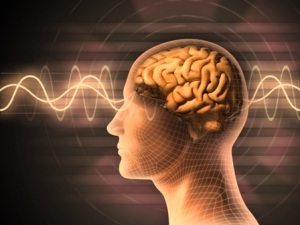



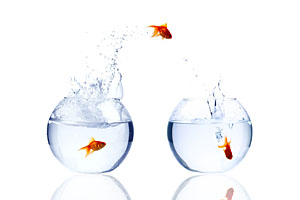 In a recent article in Harvard Business Review, Walter McFarland states that the way to effectively engage the support and creativity of a company’s employees during an organisational change lies within the field of neuroscience… Read the full article on NeuroCapability’s Brainwaves for Leaders Blog:
In a recent article in Harvard Business Review, Walter McFarland states that the way to effectively engage the support and creativity of a company’s employees during an organisational change lies within the field of neuroscience… Read the full article on NeuroCapability’s Brainwaves for Leaders Blog: 